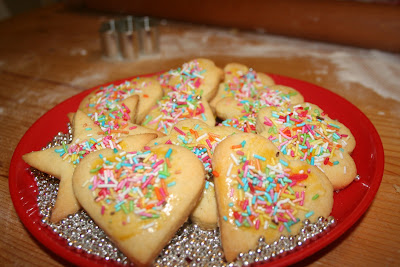CENCI typical Tuscan sweet carnival
INGREDIENTS
300 g flour
50 g sugar
2 eggs
30 g butter
A glass of vin santo and grappa
Orange peel
A pinch of salt
Icing sugar
Oil for frying
PREPARATION
Mix the flour with the eggs, sugar, melted butter, a glass of liquor (I have not made because I have small children, I used milk), a teaspoon of orange zest and a pinch of salt.
Work well in order to obtain a smooth dough, make a ball and let it rest for about an hour in a cool place.
Roll the dough quite thin and cut into thick strips and then in irregular pieces or strips, as you prefer.
Fry in plenty of hot oil.
As you are ready to set the rags on a sheet of kitchen paper and sprinkle with icing sugar.
You can taste both hot and cold.
Tuscany in a Nutshell
E-mail: tuscanyinanutshell.blogspot(at)gmail.com
By Tuscany in a Nutshell
Tuscany in a nutshell on Google+
Published:
Updated:
300 g farina
50 g zucchero
2 uova
30 g burro
Un bicchiere di vin santo o grappa
Scorza d'arancia
Un pizzico di sale
Zucchero a velo
Olio per friggere
PREPARAZIONE
Impastare la farina con le uova, lo zucchero, il burro fuso, un bicchierino di liquore ( io non l'ho messo perché ho dei bambini piccoli, ho usato un po' di latte), un cucchiaino di scorza d'arancia e un pizzico di sale.
Lavorare bene in modo da ottenere una sfoglia liscia, fate una palla e lasciarlo riposare circa un'ora al fresco.
Tirare la sfoglia piuttosto sottile e tagliatela a grosse strisce e poi a pezzi irregolari o a losanghe, come preferite.
Friggerli in abbondante olio caldissimo.
Man mano che sono pronti mettere i cenci su un foglio di carta da cucina e cospargerli con lo zucchero a velo.
Si gustano sia caldi che freddi.




















